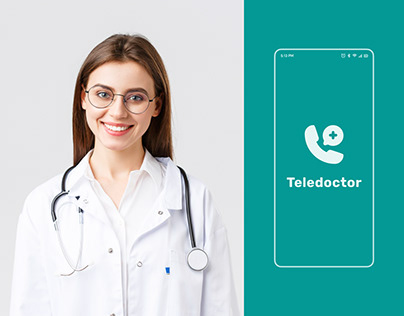Leading Factors to Select Teledoctors for Telemedicine Solutions
Exploring the Benefits and Obstacles of Teledoctors in Modern Medical Care
As the health care landscape evolves, teledoctors have emerged as a critical component in bridging gaps in clinical gain access to and effectiveness. How can the healthcare market balance these benefits with the intrinsic difficulties?
Expanding Access to Care
Telemedicine has actually become a crucial advancement in modern-day healthcare, significantly expanding access to look after varied populations. By leveraging electronic modern technology, teledoctors have changed the typical healthcare shipment version, making it possible for individuals in underserved or remote areas to obtain prompt medical examination. This advancement is particularly helpful for individuals living in country areas, where the deficiency of medical care facilities and experts usually results in postponed or poor therapy.
Teledoctors contribute in connecting the void developed by geographical barriers. Via virtual assessments, clients can access a wide variety of medical care solutions without the demand for extensive traveling. This is specifically valuable for those with mobility issues or chronic problems needing constant clinical interest. In addition, telemedicine boosts connection of care by enabling regular follow-ups and monitoring, consequently enhancing client results.
The combination of teledoctors into medical care systems also sustains the administration of public health and wellness situations by promoting quick action and triage. During pandemics, for example, digital examinations decrease the concern on physical healthcare centers, minimizing direct exposure dangers for both clients and healthcare service providers. As telemedicine continues to develop, it guarantees to reshape the landscape of healthcare accessibility, making it a lot more comprehensive and efficient.
Cost-Effectiveness of Teledoctors
The cost-effectiveness of teledoctors is a substantial variable driving their extensive fostering in health care systems. By reducing the demand for physical infrastructure and in-person sees, teledoctors provide an even more budget friendly option to typical healthcare distribution. This version permits health care providers to lower functional costs, such as those connected with preserving physical workplaces and employing substantial on-site team. teledoctors. Consequently, these financial savings can be handed down to clients in the form of lowered consultation charges, making health care extra available to a wider populace.
Moreover, teledoctors help with a more efficient use of healthcare resources by reducing unnecessary emergency space sees and health center admissions. People can access prompt appointments for small disorders or follow-up treatment, which assists to alleviate the worry on overstretched health care centers. This performance not just brings about set you back financial savings for doctor but also lowers the economic pressure on individuals who might otherwise face pricey health center costs.
Moreover, teledoctors can assist in managing persistent conditions better by offering consistent surveillance and timely interventions. This aggressive technique can avoid complications, therefore reducing lasting treatment prices. Generally, teledoctors present a viable remedy to the intensifying costs of medical care, while preserving quality treatment delivery.
Enhancing Individual Benefit
While cost-effectiveness plays a critical duty in the rise of teledoctors, boosting client ease stands as one more engaging benefit of this health care model. With the combination of teledoctors, patients can bypass the generally time-consuming process of organizing and going to in-person appointments. This design removes the need for traveling, reducing time spent in transportation and waiting rooms, thus supplying significant time cost savings for people. Especially for those with wheelchair issues or residing in remote areas, teledoctors supply a vital link to treatment that might otherwise be unattainable.
Furthermore, teledoctors offer flexible organizing, allowing individuals to arrange examinations sometimes that best fit their professional and individual dedications. This flexibility is very useful for people stabilizing demanding work schedules or household duties, guaranteeing that health care can be incorporated effortlessly right into their lives. In addition, the capability to accessibility doctor from the comfort of one's home can result in enhanced individual involvement and adherence to therapy strategies, as the barriers to looking for treatment are lowered.
The ease provided by teledoctors not only improves the patient experience yet also contributes to a more effective and responsive medical care distribution system, ultimately supporting far better health outcomes.
Dealing With Personal Privacy Worries
Amidst the expanding adoption of teledoctors, privacy worries become a significant consideration. As health care progressively depends on digital platforms, making sure the privacy of individual information ends up being critical. The digitization of medical records and making use of telecommunication innovations require robust safety and security actions to shield delicate data from unauthorized access and breaches.
Healthcare suppliers need to follow strict laws, such as the Medical Insurance Mobility and Liability Act (HIPAA) helpful resources in the USA, which develops national requirements for safeguarding medical info. Conformity with such regulations is crucial in maintaining client trust fund and ensuring their information is handled responsibly. File encryption of information, secure communication networks, and normal audits are a few of the procedures that can be implemented to enhance data defense.
Despite these actions, difficulties linger. Cybersecurity risks are advancing, and health care organizations need to remain alert to brand-new vulnerabilities. In addition, educating both individuals and healthcare carriers regarding ideal practices in information privacy is important. This consists of understanding the restrictions of data and the value of secure login qualifications. teledoctors.
As teledoctors become more indispensable visit this page to health care delivery, resolving personal privacy concerns is necessary to make sure both the effectiveness and credibility of these solutions.

Browsing the Digital Divide
Connecting the electronic divide is an essential obstacle in the prevalent fostering of teledoctors. teledoctors. This divide incorporates disparities in access to digital innovation, specifically amongst country, low-income, and elderly populations. These groups often lack the required tools, dependable internet connection, or digital literacy required for reliable involvement in Recommended Site telehealth services. Consequently, the advantages of teledoctors-- such as enhanced ease of access and benefit-- stay inaccessible for many people who might most take advantage of them.
Additionally, initiatives to fund modern technology for low-income families can play a critical function in guaranteeing fair gain access to. Health care service providers and neighborhood companies must collaborate to offer digital proficiency programs, equipping people to browse telehealth platforms with confidence.

Conclusion
The integration of teledoctors into modern-day medical care supplies considerable advantages, consisting of raised accessibility to care, cost-effectiveness, and enhanced client benefit. However, challenges such as privacy concerns, the electronic divide, and cybersecurity threats have to be addressed to make the most of these advantages. By carrying out robust information protection actions, enhancing digital literacy, and guaranteeing safe technical framework, the possibility of teledoctors can be totally recognized, advertising equitable health care shipment and transforming the medical care experience for all people.
